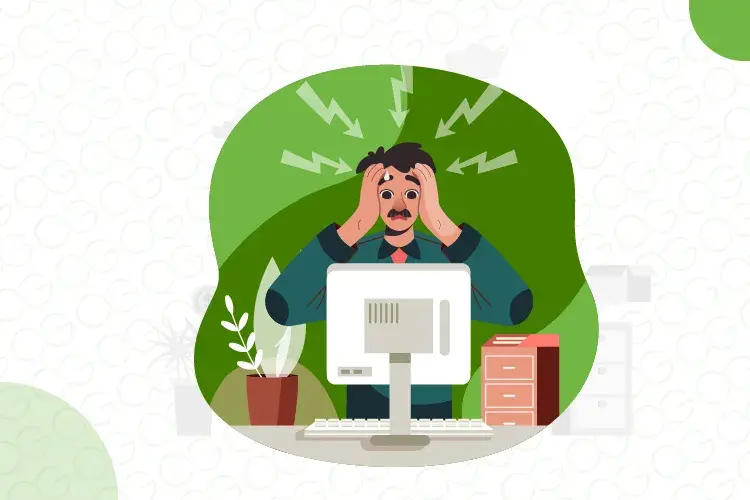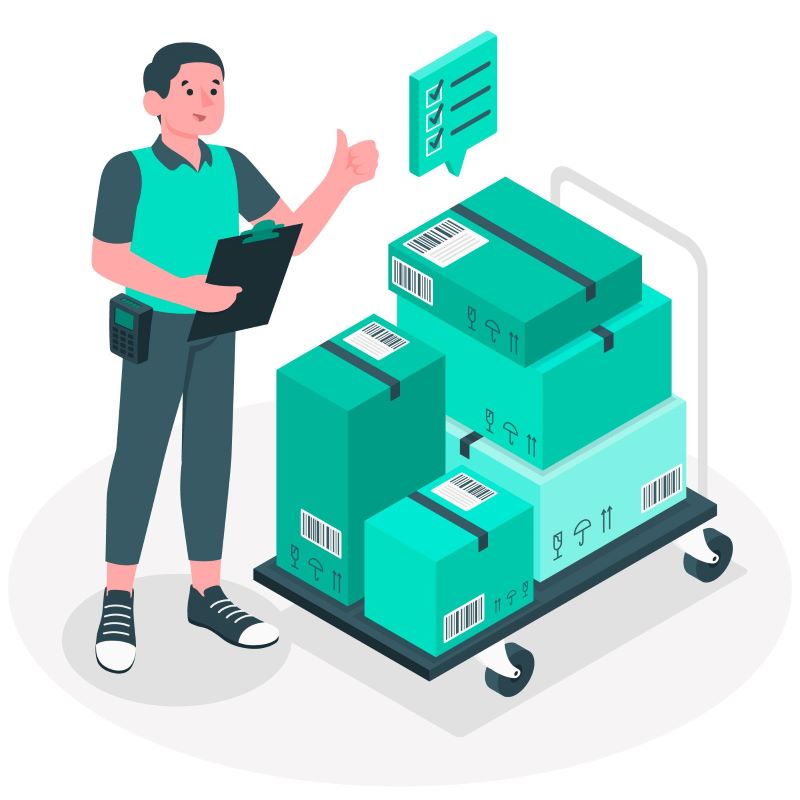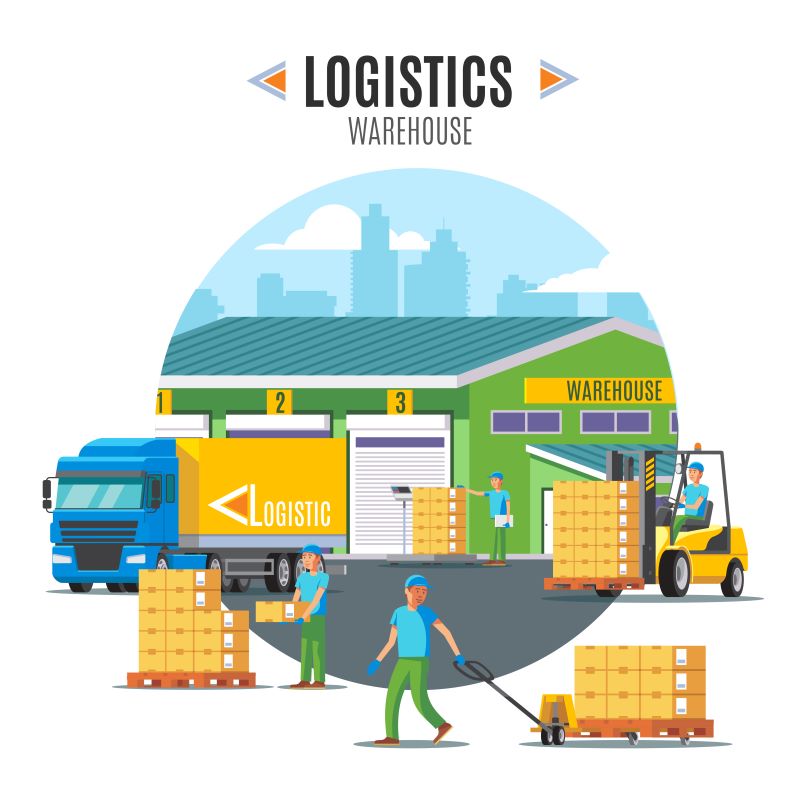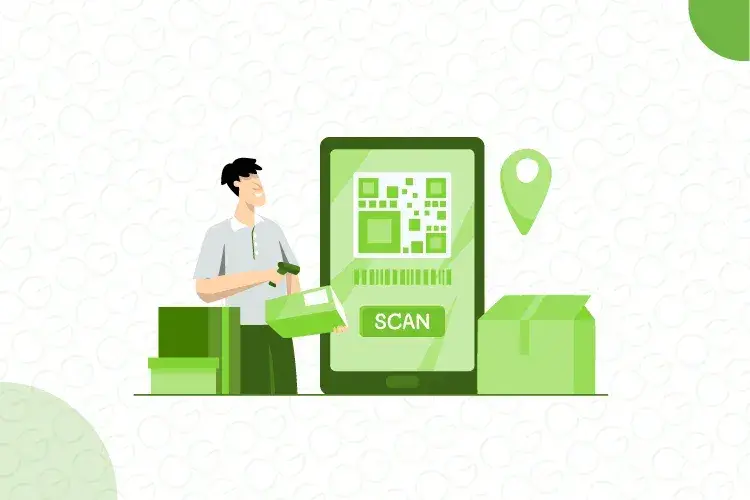5 Mistakes that Could Kill Your Ecommerce Business

The retail landscape has revolutionized in the past decade with the advent of ecommerce platforms allowing businesses to touch massive numbers of customers daily. Business growth has increased significantly, especially when these platforms plan special events and sales promotions, reaching a wider audience.
Setting the Stage for Success
Since starting an online store has now become easier than ever, more and more entrepreneurs are diving into the world of ecommerce. But this allure of growth and global reach has its own set of pitfalls that could turn into deadly ecommerce mistakes leading to the business failing before it even takes off.

Don't let these deadly ecommerce mistakes sink your business! Start optimizing your strategy now.
To make the most of what ecommerce offers and maximize your business, try to recognize these hiccups and avoid making the following ecommerce business mistakes to ensure a long and successful ecommerce venture.
1. Poor Inventory Management: The Silent Sales Killer
One of the most common ecommerce mistakes new businesses often make is improperly managing their inventories. When it comes to ecommerce, accurate inventory management is the main lifeline of your business.
The Significance of Accurate Inventory Management
Your store’s order management system tracks, records and manages incoming orders on any ecommerce website. If you do not manage your inventory properly, you can face various issues like product shortages, hoarding, cash flow problems due to overstocking and, most of all, customer dissatisfaction over out-of-stock replies to an order already placed by them.
Consequences of Overselling or Stockouts
One of the biggest ecommerce business mistakes you must avoid is this - the store shows the product is available even after stockouts. A customer places an order depending on the ‘available’ message shown on a product in your e-store. If your inventory is poorly managed, they might receive an email stating that the product is out-of-stock after they’ve placed the order.
Such instances are highly detrimental to the reputation of your business. They erode the trust and loyalty of a customer, drive away potential repeat customers and can lead to lost sales opportunities and negative reviews.
 Integrate Inventory Management with Sales Channels
Integrate Inventory Management with Sales Channels
To mitigate these risks, integrate your inventory management system with your sales channel to get real-time updates. Real-time tracking combined with automated inventory management helps you to respond to demand, restock inventory on time, and keep your business running smoothly. UPS Pulse reports over 28% of e-shoppers leave their cart when items are out of stock. Real-time inventory data could significantly reduce cart abandonment rates to retain a loyal, happy customer base.
2. Overspending on Marketing: Striking the Balance
Marketing is important for all online or offline businesses. For ecommerce businesses, marketing efforts are crucial to turning audiences into buyers. All businesses know this, but one of the main ecommerce mistakes to avoid is businesses still ending up spending too much on marketing while having disappointing ROIs.
The Allure and Pitfalls of Heavy Marketing Spending
Overspending on marketing without a clear strategy is the number one cause of draining your resources without positive returns. Well-planned marketing campaigns can lead to highly satisfactory results. However, in pursuing rapid growth, many businesses fall into the trap of excessive marketing budgets, often wrongly equated with a good marketing strategy.
Allocation of Marketing Budget Based on the Business Stage
Are you a startup or an established business? Your business stage will help you determine the perfect marketing campaign that balances cost-effectiveness and visibility. Depending on your target audience, you will choose the right marketing platforms and craft the perfect promotional campaign. A well-informed marketing strategy based on proper customer research will help you craft the most optimum marketing budget.
Optimize Marketing Investments to Maximize ROI
The first marketing investment should go towards researching your customer base. It will help you determine the best marketing platforms, ways to position your message, personalizing it, creating a fool-proof marketing strategy and other important elements.
When making important marketing and business decisions, it is crucial to carefully analyze data and statistics to optimize your marketing efforts. Real-time analytics help you update your marketing campaigns according to the feedback you receive, helping you invest hard-earned pennies in a way that offers double the returns.

Real-World Examples of Overspending and Underspending
A common tip for businesses is to allocate 10% of revenue to marketing, but this may not apply to all cases. Marketing budgets differ from company to company, depending on their growth stage. Well-established companies that earn billions in revenue often have a lower marketing budget since they are already well-known. New startups prefer to allocate 30% to 40% of their revenue to marketing since they need to capture the attention of new potential customers.
Netflix has gradually reduced its marketing budget to 9% in 2020 from the earlier 15% in 2018 because it gained an annual revenue of 24% in 2020 due to the pandemic boost in viewership. Overspending curbed in view of the profits.
A great example of underspending can be observed with Slack. Since the previous marketing budget was not allowing Slack to compete with its rival Microsoft, Slack decided to increase its marketing budget to 50% to take on the tech giant.

Learn how to strike the perfect balance in your marketing budget. Don't overspend - invest wisely!
3. Ignoring Customer Reviews: Your Business's Reputation Matters
Offline businesses often depend on word-of-mouth referrals. The digital equivalent of this is customer reviews. They directly influence a customer’s purchase decision and shape your brand reputation. One of the main common mistakes in ecommerce business is ignoring customer reviews or mishandling them.
The Domino Effect of Negative Reviews
If you have a huge number of positive reviews, it means your products are trustworthy, reliable and honest. If you have negative reviews, it reduces customer trust and reduces brand credibility. Negative reviews drive away potential customers by portraying your brand as untrustworthy. So, you must address negative reviews as soon as possible, with grace, directly addressing the issue instead of ignoring them.

How to Manage Customer Reviews?
The first thing after selling your product is to actively encourage them to leave positive reviews on the page if it meets their expectations. You are also responsible for promptly responding to negative reviews by showing genuine concern and commitment to resolving their issues.
Customer feedback allows you to improve your products, grow your brand and increase sales by embracing optimization. Reviews, both positive and negative, are an opportunity for growth. Take them seriously and work on their suggestions, addressing their problems and improving your products to match their expectations.
Your goal is to increase the number of positive reviews as they serve as powerful endorsements, driving conversions and fostering trust.
Examples of Customer Reviews Leading to Business Growth
Amazon is one of the biggest ecommerce websites online. Most companies on Amazon urge customers to leave positive reviews in exchange for minor discounts on future purchases. These companies depend on customer reviews to grow their businesses. Similarly, Yelp is another platform where customers select businesses based on the number of positive reviews.
Remember, the higher the number of reviews, the more brand awareness. Moreover, a higher number of positive reviews translates into higher brand credibility.
4. Neglecting Logistics and Warehouse Optimization
A customer places an order with all the faith that they will receive it in the best condition within a few days. Imagine the disappointment of receiving a damaged product due to poor packaging or experiencing extended delivery times.
All ecommerce businesses require a well-functioning logistical system to ensure products are delivered quickly and in good condition to the correct customer. If the supply chain is neglected, the business can face various problems like delayed shipment, lost packages and ultimately frustrated customers who are more likely to never return.
Impact of Logistical Errors on Customer Satisfaction
Catering to the customer's needs is the biggest goal of any business since it leads to increased sales. If their products or services do not reach the customer in prime condition, it will reflect poorly on the brand, likely affecting their brand credibility and reputation. If the customer faces logistical issues like delayed delivery, poor packaging, or damaged products during transit, it immediately reduces customer loyalty. The business must incur increased costs to rectify the mistake and even face the threat of negative online reviews due to poor customer satisfaction.
 Steps to Optimize the Logistics Process
Steps to Optimize the Logistics Process
A seamless customer experience should be of utmost importance. Efficient logistics and warehouse management play a huge role in this. Businesses need to:
- Hire reliable shipping partners.
- Optimize warehouse layout.
- Design robust packaging to ensure safe delivery.
- Streamline the entire logistics process.
- Ensure timely delivery.
Customer satisfaction is guaranteed when the order-to-delivery process is smooth, quick and hiccup-free, given the product also meets their expectations.

Embrace customer reviews and build a stellar reputation for your ecommerce business. Address negative reviews with grace and grow your brand.
5. Not Prioritizing Customer Experience: A Costly Oversight
Brand loyalty is largely driven by customer experience. The more businesses personalize the shopping experience, the more customers are likely to see the purchase through. Customer experience incorporates all that the customers can see on the brand or product page on the ecommerce website. Everything contributes to a good customer experience, from product images to detailed descriptions.
Consequences of Neglecting Personalized Shopping Experiences
Modern consumers seek more than just products - they crave meaningful interactions and memorable journeys.
First-time site visitors need detailed product pages to gain the trust necessary to make a purchase. So, when a business overlooks this customer experience, offering generic images and poorly written descriptions, conversion rates rapidly decrease because your brand looks untrustworthy or unreliable.
Ways to Enhance Customer Experience Across Touchpoints
 Try to create a cohesive journey across all major touchpoints. Start from high-quality product images using alternative pictures that offer the customer all the product's visual details.
Try to create a cohesive journey across all major touchpoints. Start from high-quality product images using alternative pictures that offer the customer all the product's visual details.
Next, focus on the content to make sure it answers all pain points and successfully details the products as the customer’s only solution.
Since the audience is also bound to go through customer support and recommendations, make sure to create intuitive navigation to personalize the overall customer experience. The design should allow the customer to move smoothly from one aspect to another.
Customer satisfaction is crucial because it turns a new customer into a loyal one, acting as a brand advocate, leading to referrals and organic growth. Harvard studies also reveal that repeat customers are more likely to spend more on your business since they already trust your products and brand.
Etsy - Prioritizing Good Customer Experience
Etsy is one such popular ecommerce website that urges its business owners to create a good customer experience to earn a ‘Star Seller’ badge. Businesses must actively respond to customer messages, dispatch orders on time, be clear about their shipping and return policies, add thoughtful touches to their sales and more.

Prioritize personalized shopping experiences to boost brand loyalty. Start enhancing your customer journey today.
Conclusion: Avoiding the Fatal Errors for Prosperity
The ecommerce landscape is ever evolving. Businesses need to adapt to modern marketing techniques, update information about customers, learn from their mistakes and constantly improve their services to match the customer’s expectations. Avoiding these common ecommerce mistakes can help business thrive, maintain profitability, and secure a top position in the market.
Remember to not just avoid these mistakes but also take proactive steps to rectify the current system to deliver your best to the customers, increasing brand credibility and customer loyalty. Improving and upgrading with time is the best way to ensure consistent growth and success on ecommerce platforms.
Partner with Ginesys for Ecommerce Success
If you are facing ecommerce challenges, reach out to Ginesys. Ginesys is an all-in-one retail management suite that helps businesses streamline and manage order processing, offer real-time automated inventory updates, warehouse management and order fulfillment. Explore the various Ginesys services and tools to understand how you can optimize your ecommerce system and capitalize on a smooth operation process. Partner with Ginesys to maximize your sales opportunities and elevate your e-commerce business. Book a demo online today.



